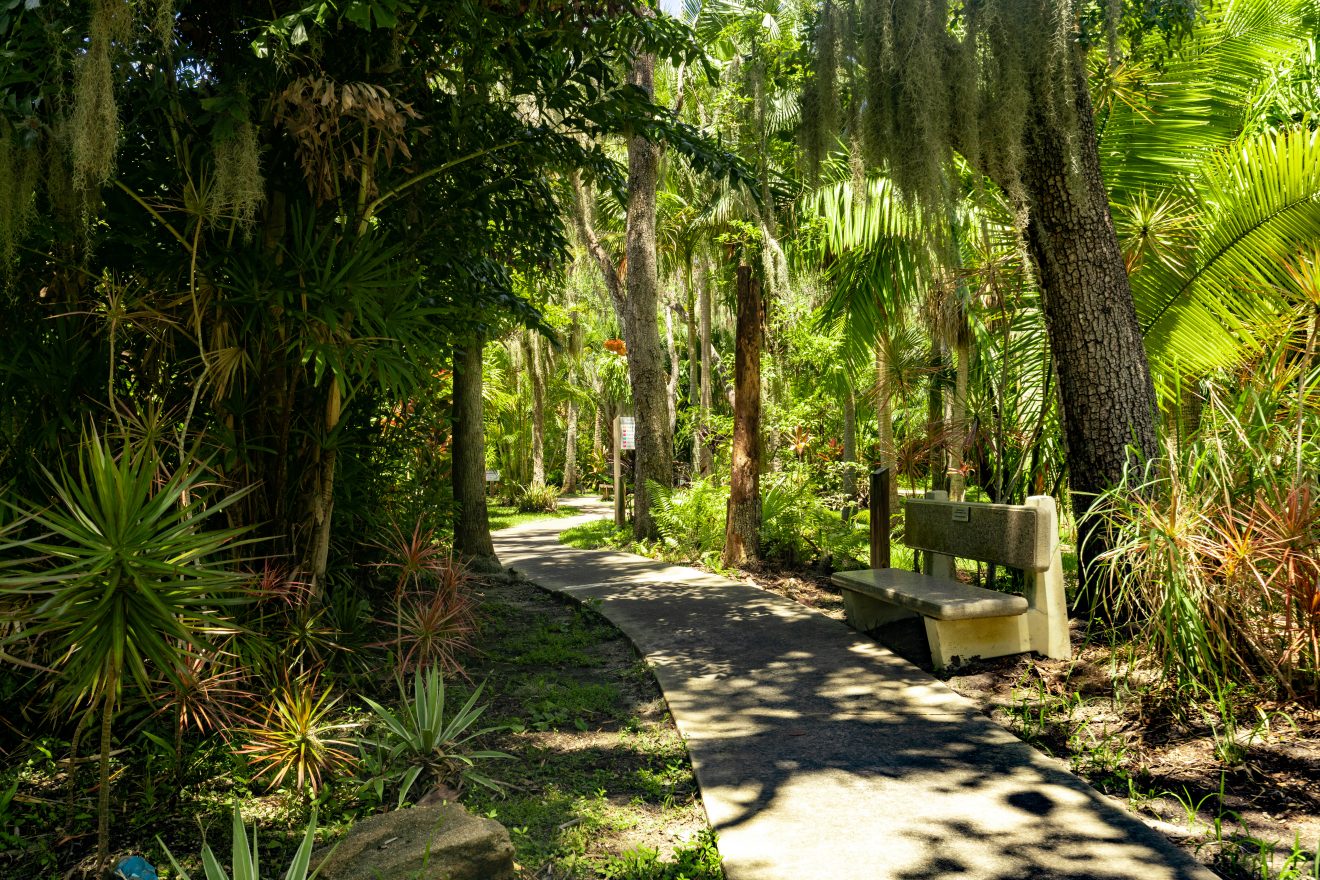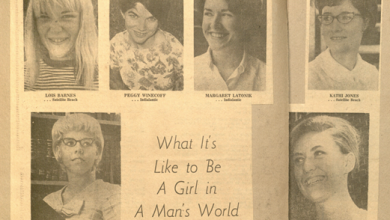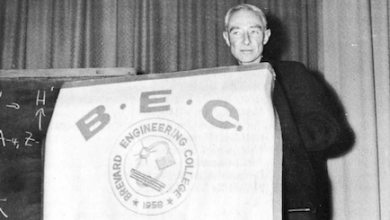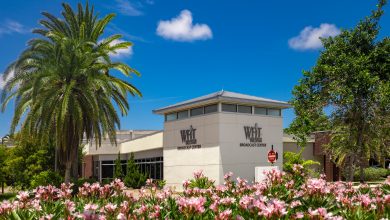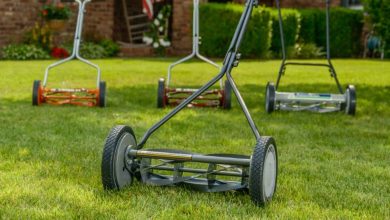Secret History: The Origins of Florida Tech’s Botanical Garden
Dateline: 1961/2019/2022

Jerome P. Keuper’s search for a permanent home for Brevard Engineering College (B.E.C.) ended in January 1961. On January 10, Hubert Normile, chair of the board of regents for the University of Melbourne (U.M.), announced that the U.M. regents and Keuper had reached an agreement. Keuper was ecstatic. The regents gave the fledgling engineering college a 99-year lease for its 40-acre campus on Country Club Road for a token $1 a year.
“The cooperation between the two boards,” Keuper stated, “has continued, and the lease granted to the college is a valued and lasting token of the friendly feeling between the two schools. … The beautiful University of Melbourne campus offers an excellent opportunity for the rapid growth of the college.”Jones, N. (1961, January 12). Melbourne Site Picked by Engineering College. Miami Herald.
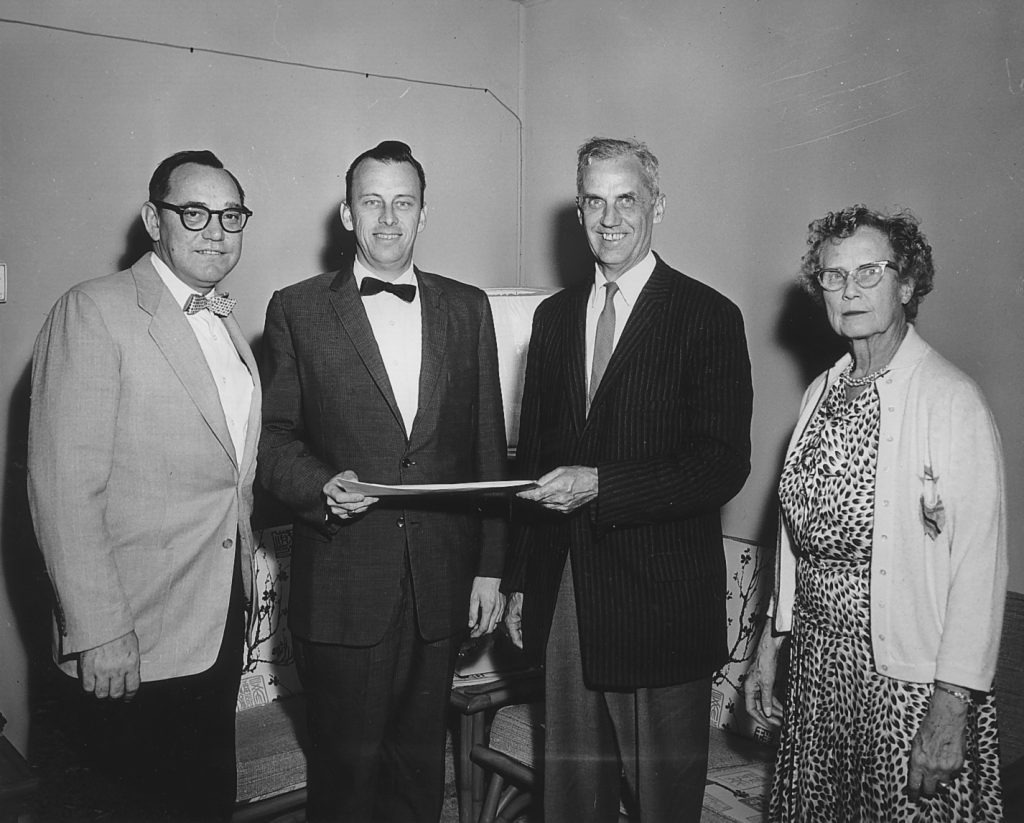
On April 15, 1961, B.E.C.’s trustees broke ground on the college’s first building.McHenry, D. (1961, April 14). City Okays New Class Building. Orlando Sentinel. Funding came from Homer Denius, president of Radiation Inc., who had promised 1,000 shares of Radiation stock if the college located in Melbourne. The plan was to complete construction on three classrooms and an administration building before summer. The 9,285-square-foot administration building and the classrooms cost $75,000. When funds became available, three additional classrooms were planned. The construction plan was patterned on the quad at Massachusetts Institute of Technology, where Keuper had earned his undergraduate degree.College Funds Expected Soon. (1961, January 20). Orlando Sentinel.
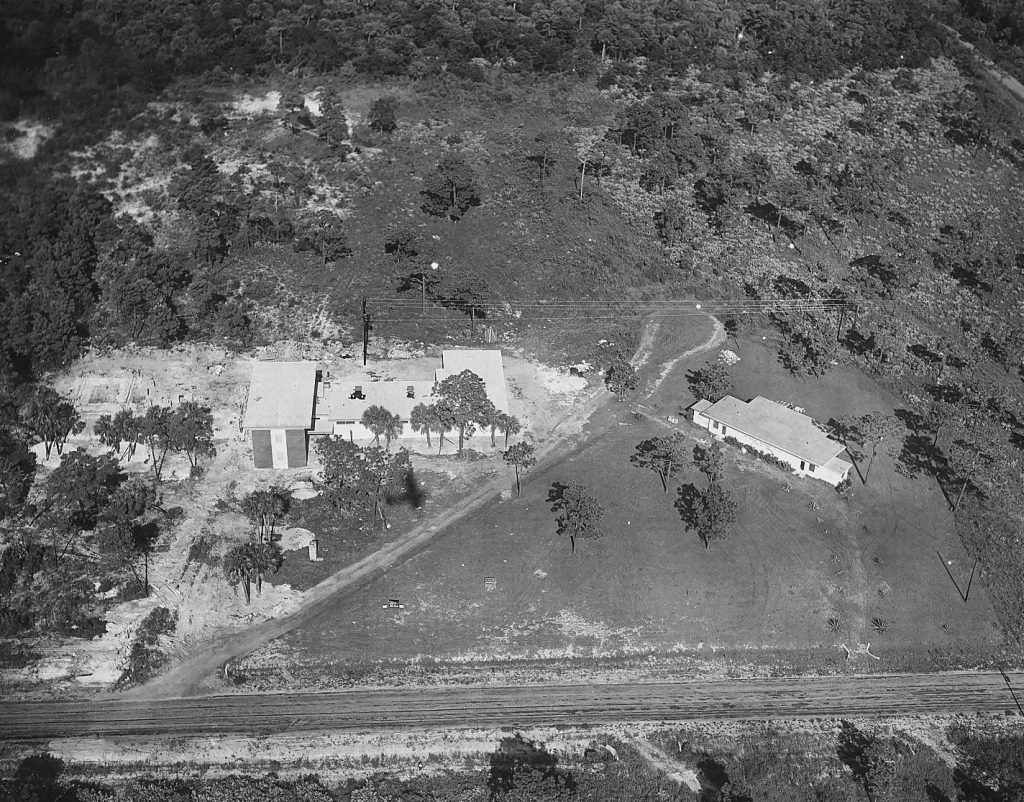
Have Shovel, Will Plant Trees
“Attempts at landscaping the campus,” Keuper later recalled “began immediately.”
The foliage on much of the 40-acre site consisted of yellow pine and saw palmetto (Serenoa repens). The northeast corner of the campus, however, sloped downward toward Crane Creek. This area was a verdant, lowland hammock consisting of oak, maple and elm hardwoods and cabbage palms. It was, in fact, Keuper’s promise to protect the hammock that had persuaded the U.M. regents to donate the land to B.E.C.
“I believe,” Keuper observed, “the critical factor in our favor was my pledge to maintain the natural hammock that threaded through the property and not to disturb any of the trees unnecessarily.”Keuper, J. (1988). [Origins of the Botanical Garden at F.I.T.].
The Big Chill
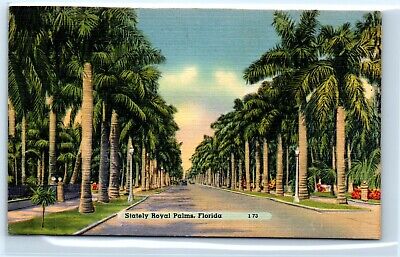
While workers poured the foundations for the classroom buildings, Keuper began planting royal palm trees (Roystonea regia) along Country Club Road.
“People were pouring in from the north and expecting to see palm trees everywhere,” Keuper recalled. “I didn’t want to disappoint them. They would see plenty of palms at B.E.C.”Keuper, J. (1988). [Origins of the Botanical Garden at F.I.T.].
Mother Nature, however, dashed the plan for the regal promenade.
Disaster struck in December 1961.
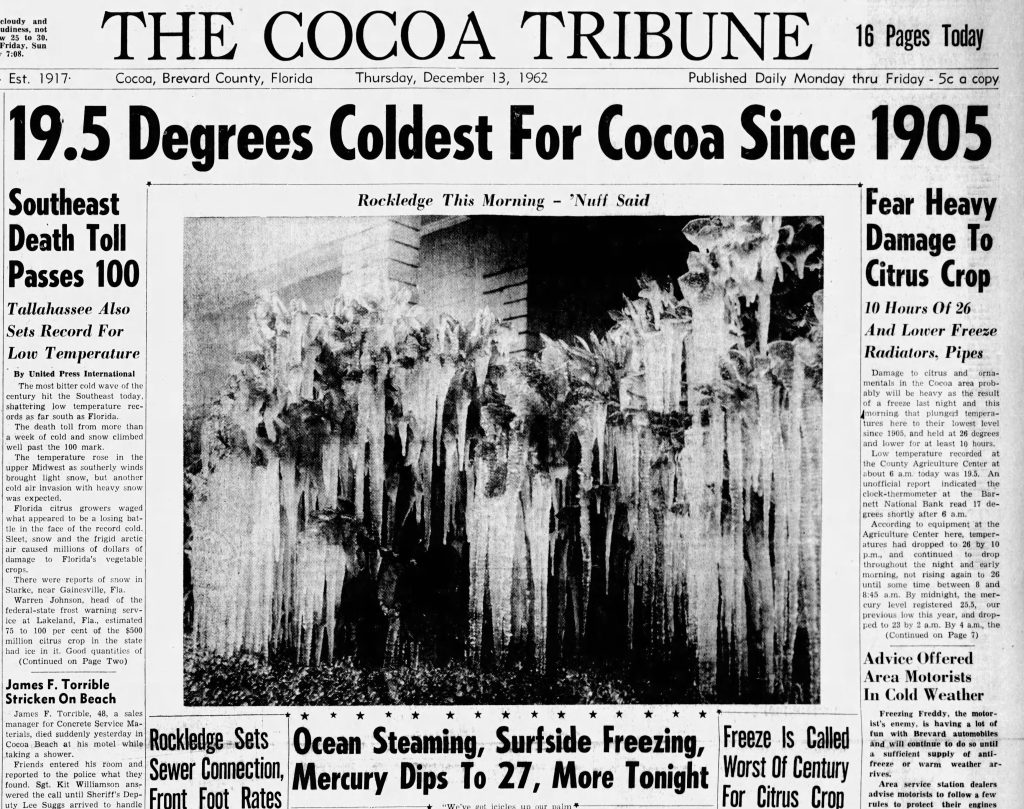
“We’ve got icicles up our palm trees,” a Cocoa Beach homeowner exclaimed December 13, 1961.Ocean Steaming, Surfside Freezing. (1961, December 13). Cocoa Evening Tribune.
Robert W. Rutledge, executive vice president of the Florida Citrus Mutual, characterized the bone-chilling freeze as the worst in the 20th century.Freeze Is Called Worst of Century for Citrus Crop. (1962, December 13). The Cocoa Evening Tribune. The frost decimated the Royal Palms.
“Most of my beautiful royals,” Keuper lamented, “quickly turned into skinny hay stacks. … It was evident that I had a lot to learn about palms.”Keuper, J. (1988). [Origins of the Botanical Garden at F.I.T.].
Trolley Car Mogul to the Rescue
A fortuitous conversation led to Keuper’s discovery that a man named Dent Smith, who lived in Daytona Beach, Florida, had an extensive collection of palms.
“It seemed obvious,” Keuper reasoned, “that whatever [Smith] could grow in Daytona Beach, we should be able to grow in Melbourne. A visit to his place was readily arranged and set the stage for a lasting friendship and mutual interest in developing a palm garden at F.I.T.”Keuper, J. (1988). [Origins of the Botanical Garden at F.I.T.].
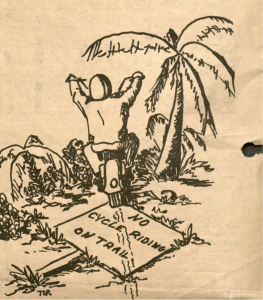
Smith was a “fascinating personality.” Born in 1897, Smith, who described himself as living an “itinerant life,” had little formal education. In his 20s, while “itinerating somewhere in Mexico, he decided to grow up” and seek his fortune on Wall Street.Korber, N. (2006). The Dent Smith Collection at Fairchild Tropical Botanic Garden. Palms, 50(4).
In 1930, while newspapers carried reports of distraught bankers leaping out of high-rise windows, Smith launched Dent and Co. The “itinerant” possessed an extraordinary talent: Where others saw losses, he found profits.
“It was a crazy time,” Smith later said. “Everybody was unloading. They thought the end of the world was near.”
The centerpiece of his investments was purchasing “depressed stocks and bonds of railroads and toll bridges.” When he retired at age 42 in 1939, Smith opined, “he owned the fourth wheel on every trolley car in the United States.”Smiley, N. (1983). On the beat and offbeat, with Nixon Smiley. Miami, Fla.: Banyan Books.
After an abortive attempt to launch a magazine during World War II, Smith moved to Daytona Beach, where he became a self-described palm fanatic. In 1955, he founded what would become the International Palm Society (I.P.S.) and began publishing Principes, the I.P.S. journal.
The Making of a Palm Fanatic
Smith’s passion for palms was infectious. He came to Melbourne and told Keuper that the campus’s hardwood hammock could become the home of a world-class collection of palms. When he departed, Keuper had contracted a raging case of Palmitis (inflammation of the brain’s limbic system governing passion for palm trees). The meeting ended on a positive note.
“We’re ready to start,” Keuper declared. “Just tell us how to get started.”
Smith responded, “I’ll do better than that. I’ll send you a truckload of palms and a man to show you how to plant them.”
The promised truckload of palms arrived a few days later.Smiley, N. (1975). A Major Florida Palm Collection. Principes, 19(2), 39-64.
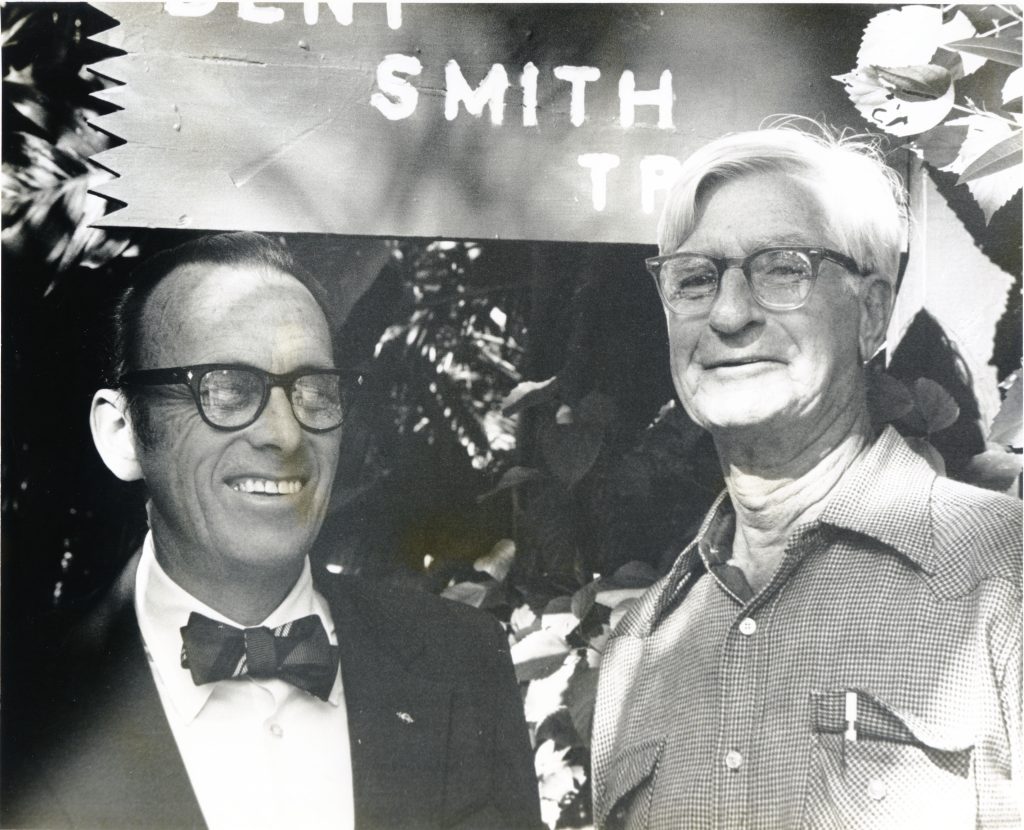
Smith’s parting advice was not to trust meteorologists. At best, Florida weather forecasts were “sorry and incompetent guesses.”
Palm trees were cold-sensitive. Keuper needed to keep this in mind. Smith’s words proved prophetic. In 1963, a cold snap swept across the state. Smith noted in his diary that the low temperature was “10 degrees lower than the forecast by the biggest boob of all the boobs in the local weather business.”Korber, N. (2006). The Dent Smith Collection at Fairchild Tropical Botanic Garden. Palms, 50(4).
Jailhouse Rock
On one occasion, Keuper’s passion for palms landed him in jail. Periodically, Keuper and his R.C.A. colleague John O’Connor, an expert on celestial mechanics, would rent a U-Haul truck and go to South Florida in search of exotic palms. They would leave on Friday afternoons, spend the night in a motel and drive back the next day with a truckload of palms.
The incident happened when they were returning to their motel. As they passed an intersection, a police car made a U-turn, flashed its lights and pulled over Keuper and O’Connor.
The Fort Lauderdale Police officer was furious. He ordered Keuper to get out of the truck.
“You didn’t dim your lights,” the officer shouted. “How come?”
Keuper apologized, explaining he was unfamiliar with the U-Haul truck’s instruments. The officer asked to see Keuper’s driver’s license. Keuper discovered that he had left his wallet in Melbourne. The policeman instructed Keuper to follow him to the Fort Lauderdale Police station. The desk sergeant booked the rocket scientist and palm aficionado, and locked them in a holding cell.
“I want my one phone call,” Keuper demanded.
It was after midnight when Keuper called Tom Adams in Tallahassee. Adams, Florida’s secretary of state, was one of Florida Tech’s stalwart supporters.
“I’ve got the Florida Highway Control,” Adams replied, “but these are local cops. There’s nothing I can do. I can’t help you.”Keuper, J. P. (1997) Interview/Interviewer: G. Patterson.
Sometime before dawn, an African American trustee in prison stripes came to the cell holding a ring of keys. In a somber voice, he opened the cell and declared,
“Come, Jerome.”
Keuper did not know what to expect as the trustee led him to the police chief’s office. A lengthy conversation ensued. Keuper told the police chief that he was a rocket scientist and B.E.C.’s president looking for palm trees. The bemused chief agreed to release Keuper and O’Connor. The chief stipulated that Keuper must bring his driver’s license to the Melbourne Police station. Keuper agreed. The only problem was, when he returned home, he discovered that his license had expired.Keuper, J. P. (1997) Interview/Interviewer: G. Patterson.
The Garden Grows
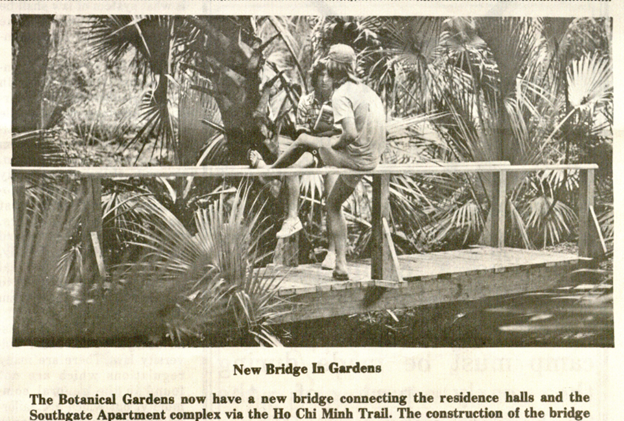
Both the college and the botanical garden grew in the 1960s. In 1966, B.E.C. became Florida Institute of Technology. In five years, Keuper had secured more than 150 species of palms for the botanical garden.
Growth brought challenges. Increased enrollment meant dormitories were needed. Florida Power and Light (F.P.L.) informed Keuper that supplying power to the planned dormitory quad (Shaw, Grissom, Campbell and Evans halls) necessitated digging a trench through the hammock.
“I had no choice,” Keuper observed, “but to agree to the project, but [I] extracted a promise from F.P.L. to snake the trench and cable around the existing palm trees. F.P.L agreed, and it worked out well. Students began to use the narrow filled-in trench as a shortcut to the dorms.”Keuper, J. (1988). [Origins of the Botanical Garden at F.I.T.].
Florida Tech groundskeepers cleared additional paths through the hammock. Concrete bridges allowed passage over the stream that threaded its way through the 128-acre campus.
In 1967, in recognition of Smith’s generosity and guidance, Keuper named the nature path passing through the garden Dent Smith Trail.
“Trust the inventive ingenuity of a physics and engineering-oriented mind,” Helene De Groodt observed, “to come up with the perfect formula for turning a dilemma into an asset.”De Groodt, H. (1967, September 12). FIT President Keys Design Around Palms. Orlando Sentinel.
In 1967, the editors of the Orlando Sentinel declared that Florida Tech “may well be the Palm Tree Center of the state of Florida, if not the entire south. … Missile technology and palms —there are no limits to what might happen next at F.I.T.”FIT Scores with Palm Plan. (1967, September 15). Orlando Sentinel.
“See Me, Feel Me, Touch Me, Heal Me”
The palm garden flourished in the next 10 years. The members of the Melbourne Garden Club (M.G.C.) threw their support behind the garden. In 1969, the M.G.C. announced plans to purchase a large tropical birdcage. The M.G.C. thought that a parrot or macaw would add to the garden’s tropical flair. A flock of peacocks already roosted in the garden. Muriel Galloway, who chaired the club’s liaison, outlined plans to attract wild birds to the campus and plant water lilies in the garden’s fishpond.
The centerpiece of M.G.C.’s initiative was the creation of a “Garden for the Blind.”Feather Gardens With Birds? (1969, February 14). Orlando Sentinel.
“There are not many gardens of this sort,” Arthur Stitzel observed, “but Muriel [Galloway] had seen one in Boston. … Muriel laid out the perimeter of the circular garden with little circular centers of interest” and arranged the strategic placement of small metal signs identifying the plants in Braille.De Groodt, H. (1973, June 19). Plants for Blind at FIT: Scents, Texture Create Garden. Orlando Sentinel. Keuper directed that the Garden for the Blind be located between the Homer R. Denius Student Center and what is now the Jerome P. Keuper Administration Building.
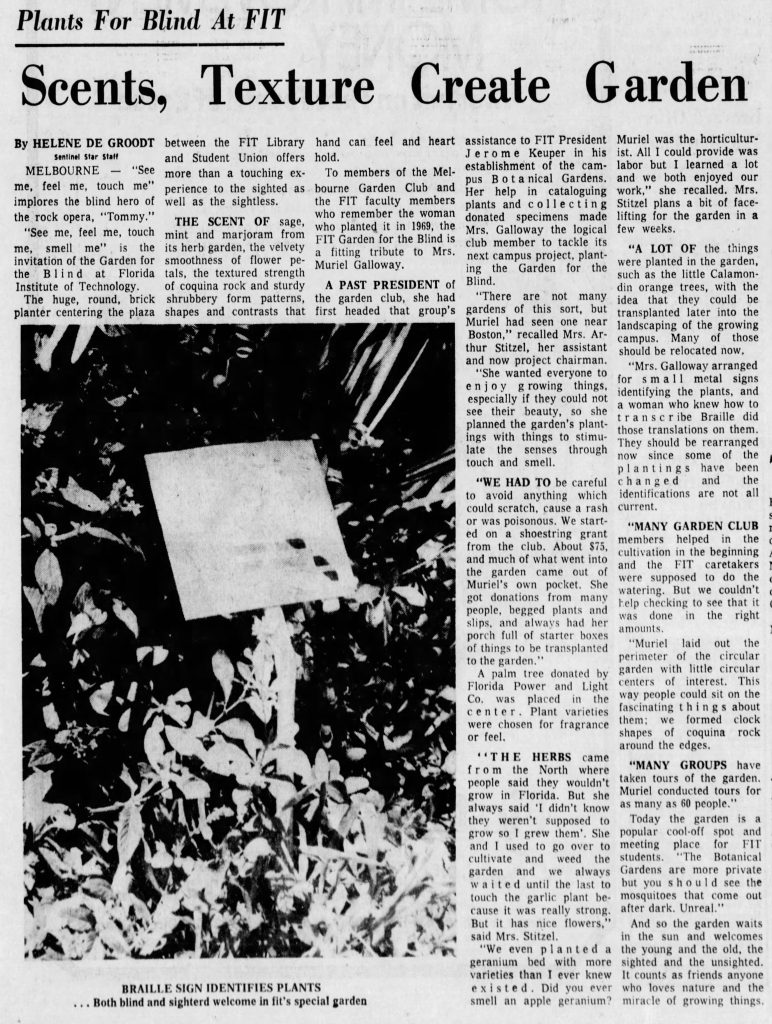
The Infamous Palmateer
Sally Mander, a Florida Tech student, teased Keuper about his passion for palms.
“I have heard false rumors circulating around campus,” Mander wrote in The Crimson, “and I would like to set the record straight. CONTRARY TO POPULAR BELIEF: The ‘P’ in Jerome P. Keuper does not stand for ‘Palmtree.'”Mander, S. (1968, February 15). Reflections from the Swamp. The Crimson.
In 1977, Florida Tech’s student newspaper editors used their annual satirical edition, The Grimson, to poke fun at Keuper. The centerpiece of their lambast was a front-page story chronicling Keuper’s hair-brained plans for the garden.
“Due to the widespread popularity of the jungle peacock, Dr. Jerome Blooper [AKA Keuper], President of P.I.T. (Palm Institute of Technology), has decided to loosen a number of animals into the jungle. … The animals selected must be hardy enough to survive many of the adverse conditions found here such as extreme heat, flash flooding, and endless boredom. The animals must also be able to co-exist with the present residents of the jungle, such as man-eating spiders and giant cockroaches. Tolerance of marijuana smoke was also a prime consideration in the process.”Animals in the Jungle. (1977, May 22). The Grimson (The Crimson’s Humor Edition).
Keuper’s palm antics became legendary over the years. Mindful of Smith’s distrust of meteorologists, Keuper maintained an “electric blanket service” for cold-sensitive palms. When cold weather threatened, Keuper would carefully wrap a particularly pampered “Hippy Palm” (Coccohhrinax crinite) in “a not-so-chic electric blanket.”Platt, P. (1985, February 22). Palm Tree Collection Pampered Pride of F.I.T. Florida Today.

The Garden Imperiled
In 1986, Keuper stepped down as Florida Tech’s president. He assumed the unofficial post of “curator of the campus botanical garden.”
In 1988, Keuper, Adams and Peter Zies organized the Friends of the Botanical Garden (F.B.G.). They envisioned turning the entire campus into a botanical garden and bird sanctuary. The F.B.G. organized plant rambles (garden tours) and plant sales in the late 1980s and 1990s.
Interest in developing the garden dwindled. In 1995, Melbourne city workers cut a 15-foot-wide strip of land running through the garden along Crane Creek with no advance warning.
“We think this was done recklessly and without much forethought,” a Florida Tech Squamish Society member declared. Squamish, a student organization dedicated to the garden’s well-being, took the city to task.
“They didn’t need to do this,” a representative of the Florida Department of Environmental Protection (D.E.P.) agreed.
“If you ask me,” Brian Poole, a D.E.P. environmental specialist declared, “[the City of Melbourne was] just sloppy. What that results in is what you see here, with this big hunk of dirt about to slide into the canal.”Thompson Jr., D. (1995, October 25). City Plows Paradise. Florida Today.

Jerry and the Fronds
Keuper died in 2003. By then, Florida’s periodic cold snaps had killed many of the 200 species of tropical palms. Membership in the F.B.G. plummeted.
Invasive species posed a new threat to the botanical garden. In 1999, the Florida Department of Agriculture placed “air potatoes,” Dioscorea bulbifera, on Florida’s Noxious Weed List. By the early 2000s, this fast-growing invasive species threatened the garden’s well-being. In 2002, Anthony Catanese, Florida Tech’s fourth president, rallied support for the garden with the university’s trustees. One of Catanese’s first steps was to enlist the help of his friends and former colleagues at the University of Florida in waging war on the air potato blight.
Under President Catanese’s leadership, there were other positive signs. Between 2005 and 2016, Florida Tech’s development office hosted a series of Botanical Fests. These events served as a showcase for the garden.
In 2019, Joy and Gordon Patterson established an endowment to preserve and maintain the garden. The Molly Butterfly Garden and fountain at the entrance to the Dent Smith Trail were added in 2022.
The Botanical Garden is a treasure. It is an oasis of calm amid the blooming, buzzing confusion of the high-tech, fast-moving contemporary world. Like the garden’s founders, Keuper and Smith, the Pattersons believe that palm trees can teach us much. Their motto: “Keep palm and carry on.”


